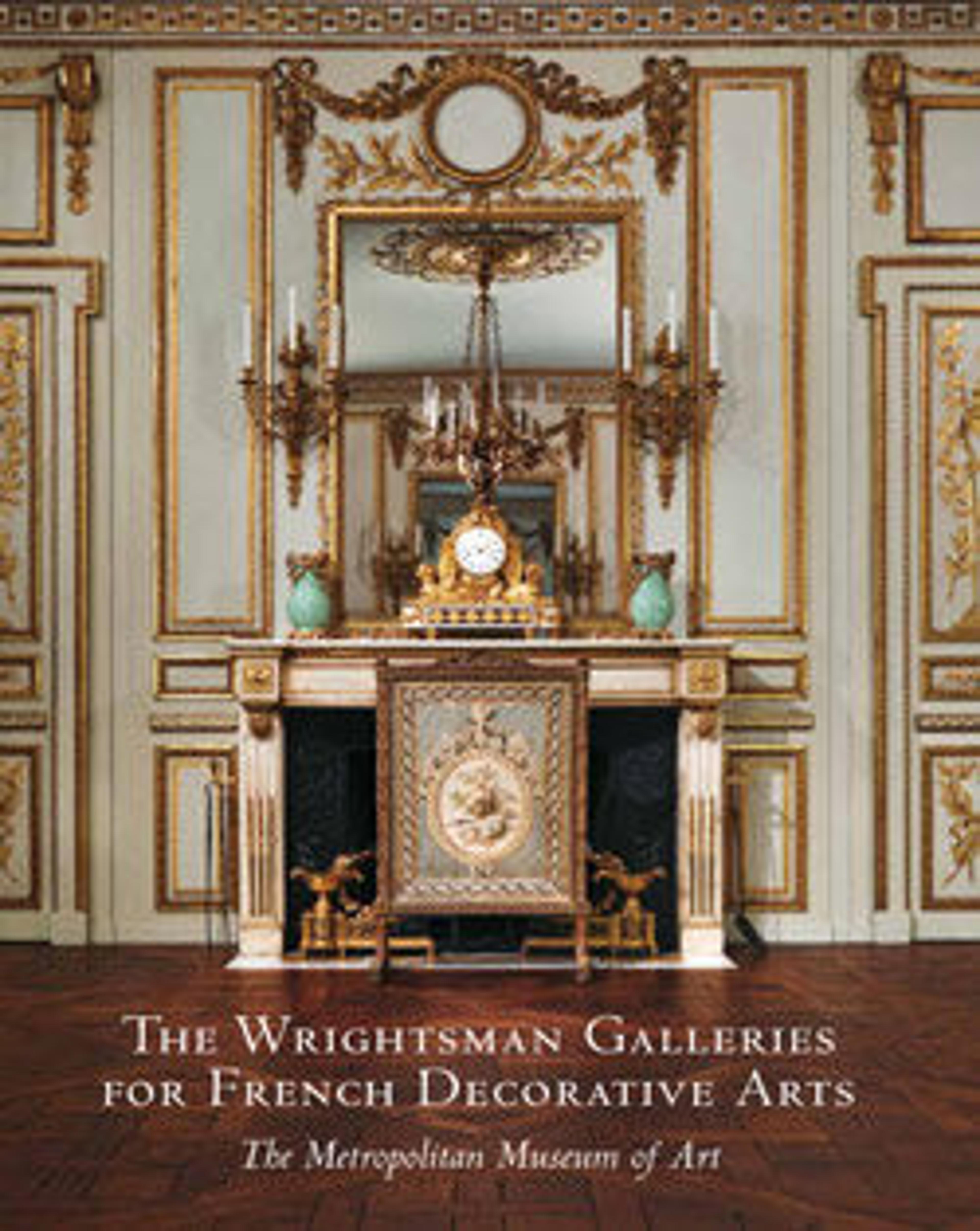Grand Salon from the Hôtel de Tessé, Paris
Following a disastrous fire, the residence at 1, quai Voltaire, was rebuilt between 1765 and 1768 at the behest of the widowed Marie-Charlotte de Béthune-Charost, comtesse de Tessé (1713–1783), and her son René Mans de Froulay (1736–1814), who had acquired the ruined building on the condition that a new mansion would be constructed. Although contemporary guidebooks credit the designs to the architect Pierre-Noël Rousset (1715–1793), it appears that the architect-contractor Louis Le Tellier (ca. 1700–1785) was primarily responsible for the creation of this Paris house with its dignified facade, still standing today on the left bank of the Seine, near the Pont du Carrousel. Since the accounts were not settled until April of 1772, it is likely that the interior decoration was not completed before then. The Museum’s paneling with its refined carving in the Neoclassical style was the work of woodworker Nicolas Huyot, a maître menuisier about whom little is known.
The carving was done by the sculptor Pierre Fixon or his son Louis-Pierre, or perhaps the two in collaboration. The Fixons may also have created the plaster overdoor reliefs representative of the four seasons. The marble sculptor Jean-Baptiste-Antoine Le Franc, who like the Fixons had worked with Le Tellier on various other projects, was responsible for the blue turquin marble mantelpiece, which is original to the room. The paneling acquired by the Museum decorated the largest of the formal reception rooms that were aligned, or laid out en enfilade, on the first floor of the building (the American second floor). Particularly beautiful are the coffered triumphal arches executed in perspective that frame the four mirrors and are crowned by laurel branches and floral wreaths. The 1783 inventory drawn up after the death of the comtesse de Tessé indicates that this room was called the Salle du Dais (Canopy Room) after the large tester or canopy that must have been mounted on the wall opposite the windows. Underneath this crimson damask tent, which was enriched with gold embroidered appliqués of the Tessé family coat of arms, the comtesse or her son presumably received their guests. Although not of royal birth, Madame de Tessé was the widow of René Mans de Froulay (1707–1742), comte de Tessé and marquis de Laverdin, as well as a Spanish grandee. In addition to a sixleaf folding chamber screen, the room was furnished with twenty-nine chairs all covered with different crimson fabrics, a small veneered bookcase, and a gilt-bronze cartel clock with movement by Voisin. Several family portraits and two tapestries of landscape scenes were hung on the side walls. The 1783 inventory of the hôtel did not list any curtains in the room; perhaps none were hung, in order not to obscure the lovely view from the three large windows of the Seine and the Louvre and Tuileries palaces across the water.
Artwork Details
- Title: Grand Salon from the Hôtel de Tessé, Paris
- Maker: Made by Nicolas Huyot (1700–1791)
- Maker: Carved by Pierre Fixon (active 1748–88)
- Maker: and/or his son Louis-Pierre Fixon (born 1748)
- Maker: Chimneypiece by Jean-Baptiste-Antoine Lefranc
- Maker: Contracted by Louis Le Tellier (ca. 1700–1785)
- Date: ca. 1768–72, with later additions
- Culture: French, Paris
- Medium: Carved, painted, and gilded oak; marble; plaster
- Dimensions: H. of room 16 ft. (4.87 m), W. 29 ft. 6-1/2 in. (9 m), L. 33 ft. 7-1/2 in. (10.25 m)
- Classification: Woodwork
- Credit Line: Gift of Mrs. Herbert N. Straus, 1942
- Object Number: 42.203.1
- Curatorial Department: European Sculpture and Decorative Arts
Audio
110. Grand Salon from the Hôtel de Tessé, Part 1
Highlights Tour
Now here’s an interior space to match the nobility of the aristocrats we’ve seen in portraits. The interiors of eighteenth-century France were legendary for their sumptuous decoration: look at this room’s crystal chandeliers, superbly finished furniture, and paneling of lavishly carved and gilded wood. Strangers to this opulence treated it with suspicion, especially the more puritanical Americans of the time. On one of his two trips to Europe, the future American president John Adams wrote in 1778: “I cannot help suspecting that the more elegance, the less virtue...” A room like this would surely have tested Adams’ resolve. Everything it contains is contrived to seduce and to charm. Unlike the Italian Renaissance studiolo, which I showed you earlier in our tour, this is a space to be shared—albeit for receptions with very special invited guests. The delicacy and grace of the decoration set an elegant tone. The furnishings display favorite pursuits of eighteenth-century society. The portrait on the wall shows a woman tuning a harp, reflecting the taste for music; in front of the fireplace, you see a boar and a stag, allusions to the hunt; and the old-fashioned clock on the mantelpiece shows Eros, the god of love. There are great treasures in this room; press play to hear more.
Listen to more about this artwork
More Artwork
Research Resources
The Met provides unparalleled resources for research and welcomes an international community of students and scholars. The Met's Open Access API is where creators and researchers can connect to the The Met collection. Open Access data and public domain images are available for unrestricted commercial and noncommercial use without permission or fee.
To request images under copyright and other restrictions, please use this Image Request form.
Feedback
We continue to research and examine historical and cultural context for objects in The Met collection. If you have comments or questions about this object record, please contact us using the form below. The Museum looks forward to receiving your comments.
